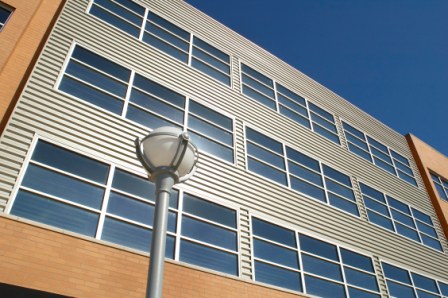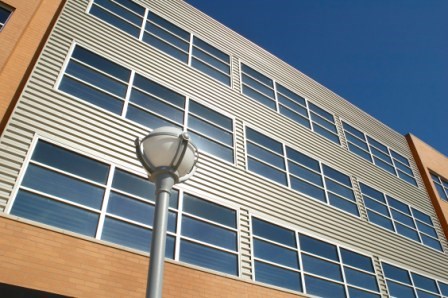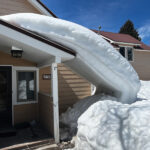
Five reasons why metal is a prominent building product
There’s little doubt that metal panels are one of the most prominent building products in today’s U.S. construction market.
In fact, you don’t need to travel far to see a wide variety of applications-they’re all around us. The next time you fill up, look up: metal panels. The next time you pass by a self storage facility: metal panels. That school gymnasium roof? Metal panels. That equipment screen on the nearest hospital? Metal panels. That fire station with the nifty façade? You see the pattern.
Metal panels are everywhere. In fact, metal panels are so prevalent that an entire industry exists just to supply/support metal panels, not to mention the numerous associations and publications specifically devoted to the use and promotion of metal panels. So, why have metal panels become so popular? There are countless reasons, but most fall into the following five categories: versatility, durability, flexibility, availability and sustainability.
Versatility
Metal panels have a myriad of applications. They are used for roofs, walls, fascias and soffits. Metal roofs are used in low-slope, commercial/industrial applications, as well as steep-slope, architectural applications. Metal wall panels can be applied vertically and horizontally as well as on a skew. The industrial market typically uses through-fastened, ribbed profiles while the architectural community gravitates towards concealed fastener, flat-profile products. Metal soffits, fascias and façades are used to accent new construction and dress up existing construction. One would be hard pressed to find a more versatile building material.
 |
Durability
A metal panel’s most valuable attribute is its durability, or in other words, its ability to withstand the elements. The vast majority of metal panels are supplied with a corrosion-resistant coating of Galvalume or G90 galvanizing. Other durable metals used for panels are copper, aluminum and zinc. Not only is the base material itself durable, most metal panels are put through a rigorous schedule of testing. Metal panels are tested for fire resistance, impact resistance (hail, flying debris), and wind resistance by various agencies and municipalities. The most popular metal panels will carry approvals from one or more of the following agencies: Factory Mutual, Underwriters Laboratories, Miami Dade County, ICC-ES. Plain and simple: metal is tough.
Flexibility
A brilliant mix of form as well as function, metal panels are capable of producing many different looks and feels. Most manufacturers give a vast offering of standard colors as well as a limitless custom color palette: Home Depot orange, Lowe’s blue, Coca-Cola red. If you want it, you can get it in a metal panel. To satisfy varying tastes and applications, metal panels also come in various widths, gauges and styles. Metal panels can even be curved and/or tapered to achieve that perfect architectural effect. Finally, metal panels are available in many different textures. Some textures are post-applied to give a stucco or rock-aggregate look while other textures are formed into the metal during the manufacturing process. Embossing the material is one such method of a formed texture.
Availability
In the U.S., the metal panel market is a mature one. Most parts of the country have multiple suppliers in or near the majority of metropolitan areas. While the industry got its start with fixed-base producers, a number of portable manufacturers have somewhat revolutionized the business. Today, there are metal panel mills mounted to the backs of trucks on scissor lifts with tilting mechanisms that allow contractors to run continuous panels on-slope, on-site, at the roof line. As the metal panel market continues to grow, so too does the pool of capable manufacturers, installers and general contractors.
Sustainability
Last but not least, metal panels are green. Most steel, copper and aluminum have a degree of recycled content, and, of course, they are all 100 percent recyclable. The panels contribute to LEED points and most of today’s paints allow for greater solar reflectance and emittance. All of these attributes allow for lower energy consumption and in turn help protect our environment.
For years now, metal panels have been one of the most cost-effective products for exterior building cladding. They are readily available, strong and last for years. Most recently, many manufacturers and architects have found new, innovative and eyecatching ways to utilize this versatile building product. As markets continue to mature and become ever more energy and cost conscious it would be safe to say that metal panels will continue to exceed the needs of building designers everywhere.
Brian N. Jaks, PE, is the vice president of sales and marketing at Green Span Profiles, Waller, Texas. For more information, visit
www.greenspanprofiles.com.






